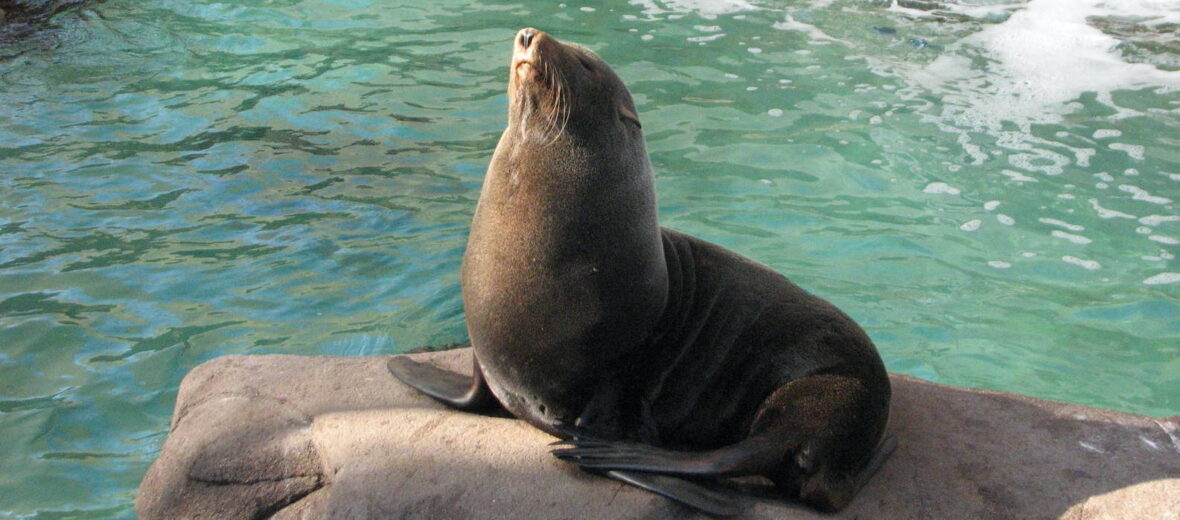
Guadalupe fur seals are members of the “eared seal” family. They are found almost exclusively on Guadalupe Island, off the Pacific coast of Mexico, with a recent re-colonization off of San Benito Archipelago. A small group of these fur seals have also been seen on the northern Channel Islands off the California coast. Back in the 1700s – 1800s these seals were hunted to what many thought was their extinction. Their primary threats are due to bycatch, military activities, ocean noise, and oil spills. They are also thought to be hunted by sharks.
First the Stats…
Scientific name: Arctocephalus townsendi
Weight: Up to 400 lbs.
Length: Up to 6.5 feet
Lifespan: Up to 23 years
Now on to the Facts!
1.) Primary prey items are assumed to be shrimp, possibly other crustaceans, lanternfish, and other fish.
2.) The Guadalupe fur seal was thought to be extinct in the late 1800’s but in 1928, a couple of fur seals were sighted at Isle de Guadalupe off the coast of Mexico.
3.) The Guadalupe fur seals are the only known Arctocephalus species that lives north of the equator.
4.) They typically breed on the Isle de Guadalupe.
5.) Their population is assumed to be over 34,000.
But wait, there’s more on the Guadalupe fur seal!
6.) Mothers and pups communicate with unique scents and vocalizations.
7.) Females nurse their pups for 8 – 9 months.
Did you know…?
Guadalupe fur seals are listed as endangered by the IUCN. Breeding efforts have been underway for years now and their main habitat has been declared a sanctuary. These seals are now protected by law.
8.) Pups are born between June – August.
9.) Guadalupe fur seals are polygynous (1 male mates with a harem of females). A typical harem can consist of up to 12 females.
10.) These fur seals forage at sea for up to 14 days, in search of food. They can travel up to 276 miles in their journey.
Now a Short Guadalupe Fur Seal Video!
Also, check out the Critter Science YouTube channel. Videos added frequently!
Want to suggest a critter for me to write about? Let me know here.



